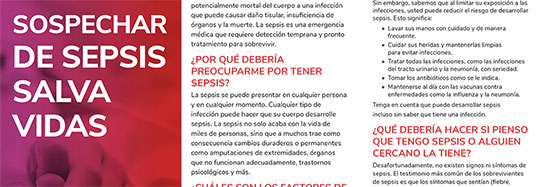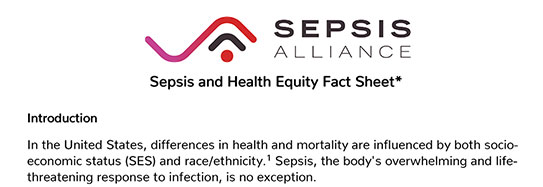In the United States, there are big differences in health levels. These differences, called health inequities, can occur based on a person’s wealth, their race or ethnicity, and where they live. Some groups are more likely to get sick, struggle to access medical care, and even have lower life expectancies.
Because of these inequities, racial and ethnic minority groups and poorer populations often have worse health outcomes. Sepsis, a life-threatening emergency that happens when your body’s response to an infection damages vital organs, is no exception.
- Black individuals bear nearly twice the burden of sepsis deaths, relative to the size of the Black population, as compared to white individuals.
- Children with severe sepsis or septic shock who are Black or Hispanic are approximately 25% more likely to die than non-Hispanic white children.
- American Indians and Alaskan Natives in the Indian Health Service area are 1.6 times more likely to die from sepsis than the national average.
- Adults below the poverty line have over three to four times the risk of dying of sepsis as compared to adults whose family income is at least five times the poverty line.
- Adult patients without health insurance are more likely to die of sepsis than privately insured patients, and are less than half as likely to be discharged to a nonhospital healthcare facility or discharged with home healthcare.
To learn more about these and other sepsis inequities, download our Sepsis and Health Equity fact sheet.
It is our responsibility to tackle health inequities. As long as health inequities exist, many Americans are becoming sick unnecessarily and even dying preventable deaths. This includes sepsis deaths.
As part of the larger healthcare sector, Sepsis Alliance is committed to closing gaps in health outcomes. This aligns with our mission to save lives and reduce suffering by improving sepsis awareness and care.


































